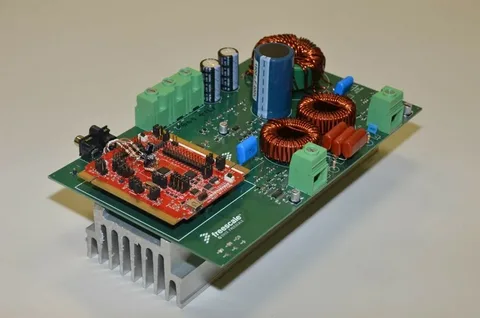The CMOS Power Amplifier market will grow to USD 6.85 billion in 2025 and further grow to USD 31.40 billion by 2035, at a CAGR of 16.4% over the forecast period. They are being used more and more by companies because they are highly efficient, cost-effective, and can be integrated into contemporary wireless communication systems. Investment in 5G infrastructure, IoT use cases, and upcoming RF technology will also drive the industry.
In the fast-evolving world of wireless connectivity, performance is no longer measured just by speed—it’s defined by efficiency, integration, and signal integrity. At the core of every smartphone, IoT device, and next-gen wireless module lies a component that amplifies the future: the CMOS power amplifier.
Compact, cost-effective, and scalable, CMOS (Complementary Metal-Oxide-Semiconductor) power amplifiers are redefining how devices transmit signals in today’s hyperconnected world. They may not dominate product launches, but their presence is vital in every call made, file uploaded, or device synced.
Get Ahead with Our Report: Request Your Sample Now!
https://www.futuremarketinsights.com/reports/sample/rep-gb-2087
More Than Amplification: Enabling Efficient Wireless Communication
At a glance, a CMOS power amplifier’s job seems simple—boosting signal strength before transmission. But in practice, it does much more. It balances linearity, gain, and power efficiency, all within tight form-factor constraints. In modern applications, it must do so while conserving battery life and minimizing heat.
As wireless standards grow more complex—supporting multiple frequency bands, high-speed data, and low-latency communications—CMOS power amplifiers enable consistent signal performance across networks and devices. They turn weak signals into reliable transmissions, allowing everything from wearables to industrial sensors to stay connected.
Overshadowed by RF Innovation, Yet Essential to Every Connection
While 5G antennas, Wi-Fi 7 routers, and AI-powered baseband chips capture media attention, CMOS power amplifiers work quietly behind the scenes—bridging the gap between digital circuits and the analog world. Their role is subtle but strategic, ensuring that signals leave the device with enough strength and clarity to travel through crowded spectrums.
In smartphones, they support multi-band connectivity. In IoT devices, they allow long battery life. In wireless infrastructure, they reduce size, weight, and power consumption. Without CMOS amplifiers, compact and power-sensitive applications would struggle to scale in today’s connected environment.
Built for Integration, Designed for Scalability
Unlike traditional GaAs (Gallium Arsenide) amplifiers, CMOS power amplifiers can be fabricated alongside digital and analog circuits on the same silicon die. This integration is a game-changer—it reduces cost, simplifies design, and enables high-volume production.
Manufacturers are leveraging this compatibility to create system-on-chip (SoC) solutions that include RF front ends, amplifiers, and controllers—all in one package. This not only improves performance but also accelerates time-to-market for device makers across consumer electronics, automotive, and industrial sectors.
Meeting the Challenge of Performance and Miniaturization
As devices shrink and networks diversify, CMOS power amplifiers must balance competing demands: higher data rates, broader bandwidths, and lower power consumption—all within smaller footprints. Efficiency across varying power levels, fast thermal dissipation, and signal linearity in multi-carrier environments are just a few of the technical challenges.
To meet these needs, designers are adopting envelope tracking, digital predistortion, and adaptive biasing techniques—enhancing amplifier intelligence without sacrificing efficiency. These innovations are making CMOS PAs suitable for increasingly demanding applications, from 5G handsets to satellite modems.
Exhaustive Market Report: A Complete Study
https://www.futuremarketinsights.com/reports/cmos-power-amplifiers-market
Fueling the Next Phase of Low-Power Innovation
In the expanding universe of connected devices, power efficiency is paramount. CMOS amplifiers play a key role in enabling low-energy wireless communication. Whether it’s extending battery life in fitness trackers, reducing power draw in smart meters, or supporting solar-powered sensors, these amplifiers help make sustainability possible at the edge.
As more industries embrace IoT and machine-to-machine (M2M) communication, the demand for amplifiers that can deliver reliable performance without draining power will continue to rise—and CMOS technology is perfectly positioned to deliver on that promise.
The Quiet Force Behind Wireless Progress
They may be invisible to the user and buried deep within circuit boards, but CMOS power amplifiers are indispensable to modern wireless design. They make connectivity possible where it wasn’t before—powering the tiny devices, vast networks, and high-frequency systems that define the digital age.
As we move deeper into the era of smart everything—from autonomous cars to immersive wearables—the importance of efficient, integrated, and scalable amplification will only grow. CMOS power amplifiers may not make noise, but they’re the reason your devices can talk—clearly, reliably, and endlessly.


